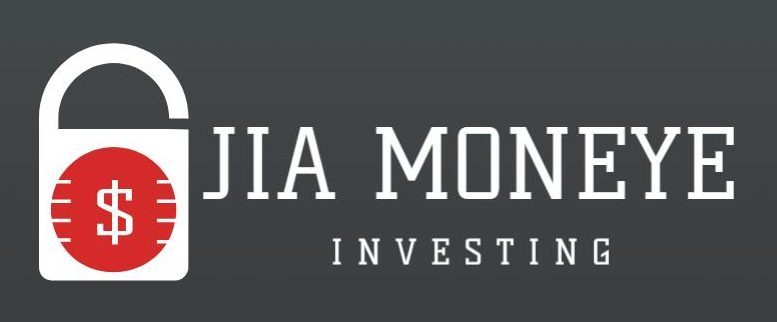
Debt Management: How to Reduce Credit Card Balances
Effective Strategies for Reducing Your Credit Card Balances
Debt management can be a daunting task, especially when it comes to reducing credit card balances. However, with the right strategies, it’s possible to take control of your financial situation and work towards a debt-free future.
Firstly, it’s important to understand the nature of credit card debt. Unlike other forms of debt, credit card balances accrue interest at a high rate, which can make them difficult to pay off. This is why it’s crucial to prioritize paying off your credit card debt as quickly as possible.
One effective strategy for reducing your credit card balances is to pay more than the minimum payment each month. While it may be tempting to only pay the minimum, doing so can prolong your debt and result in more interest charges. By paying more than the minimum, you can reduce your balance faster and save money on interest in the long run.
Another strategy is to use the snowball method. This involves paying off your credit cards starting with the smallest balance first, while making minimum payments on your other cards. Once the smallest balance is paid off, you move on to the next smallest, and so on. This method can provide a sense of accomplishment and motivate you to continue paying off your debts.
Alternatively, you could use the avalanche method, which involves paying off the credit card with the highest interest rate first. This can save you more money in interest over time, but it may take longer to see progress since the balances on high-interest cards are often larger.
Consolidating your credit card debt is another effective strategy. This involves transferring your balances to a single card with a lower interest rate or taking out a personal loan to pay off your credit cards. This can simplify your payments and potentially save you money on interest. However, it’s important to read the fine print and understand the terms of the consolidation loan or balance transfer offer to ensure it’s a good fit for your situation.
Budgeting is also a key part of reducing your credit card balances. By creating a budget and sticking to it, you can ensure you have enough money to make your credit card payments each month. It can also help you identify areas where you can cut back and put more money towards your debt.
Lastly, consider seeking professional help if you’re struggling to manage your credit card debt on your own. Credit counseling agencies can provide advice and resources to help you create a debt management plan and negotiate with your creditors.
In conclusion, reducing your credit card balances may seem challenging, but with the right strategies, it’s achievable. Whether you choose to pay more than the minimum, use the snowball or avalanche method, consolidate your debt, budget carefully, or seek professional help, the key is to stay committed and keep your end goal in sight. Remember, every step you take towards reducing your credit card balances is a step towards financial freedom.
Maximizing Your Credit Card Rewards: A Comprehensive Guide
Credit card rewards can be a fantastic way to get more value from your everyday spending. However, it’s essential to understand how to maximize these benefits while minimizing the potential for debt. This comprehensive guide will help you navigate the world of credit card rewards with ease.
Firstly, it’s crucial to understand the different types of credit card rewards available. Some cards offer cash back on purchases, while others provide points or miles that can be redeemed for travel, merchandise, or gift cards. The key to maximizing these rewards is to choose a card that aligns with your spending habits. For instance, if you frequently travel, a card that offers travel rewards may be the best fit. On the other hand, if you spend a lot on groceries or gas, a card that offers cash back on these categories might be more beneficial.
Once you’ve chosen a card that fits your lifestyle, the next step is to familiarize yourself with the card’s rewards structure. Some cards offer a flat rate on all purchases, while others offer bonus rewards in specific categories. Understanding how your card’s rewards program works can help you strategize your spending to earn the most rewards.
However, while chasing rewards, it’s essential not to overspend. Remember, the goal is to earn rewards on the money you would be spending anyway, not to spend more just to earn rewards. Overspending can lead to carrying a balance, which can result in interest charges that could outweigh any rewards earned.
Another way to maximize your rewards is by taking advantage of sign-up bonuses. Many credit cards offer lucrative bonuses to new cardholders who meet a certain spending requirement within the first few months. These bonuses can significantly boost your rewards balance, but it’s important to ensure that the spending requirement aligns with your budget. Again, overspending to earn a bonus can lead to debt.
In addition to earning rewards, it’s also important to understand how to redeem them. Some cards offer a straightforward redemption process, while others may require you to navigate through a rewards portal. Be sure to read the fine print to understand any restrictions or expiration dates on your rewards.
Lastly, it’s crucial to pay your balance in full each month. Carrying a balance can lead to interest charges, which can quickly eat into any rewards you’ve earned. By paying your balance in full, you can avoid these charges and truly maximize your rewards.
In conclusion, credit card rewards can be a great way to get more value from your spending. However, it’s important to choose a card that aligns with your spending habits, understand the rewards structure, avoid overspending, take advantage of sign-up bonuses, understand how to redeem your rewards, and pay your balance in full each month. By following these steps, you can maximize your credit card rewards while minimizing the potential for debt. Remember, the key to successful credit card rewards is responsible spending. Happy rewarding!
Effective Ways to Manage and Repay Your Student Loans
Managing debt can be a daunting task, especially when it comes to credit card balances and student loans. However, with the right strategies and a disciplined approach, it’s possible to reduce your debt and regain control of your financial health.
Firstly, let’s talk about credit card balances. These can quickly spiral out of control due to high interest rates and the ease of making minimum payments. One effective way to reduce your credit card balance is by paying more than the minimum amount due each month. This not only reduces your balance faster but also saves you money in interest over time.
Another strategy is to consolidate your credit card debt. This involves transferring your balances to a single card with a lower interest rate or taking out a personal loan at a lower rate to pay off your credit cards. This can make your debt more manageable and reduce the amount of interest you pay.
It’s also important to stop using your credit cards while you’re trying to pay down your debt. This might seem obvious, but it’s easy to fall into the trap of using your cards while you’re trying to pay them off, which only adds to your debt and makes it harder to reduce your balances.
Now, let’s shift our focus to student loans. These are a significant source of debt for many people, but there are several strategies you can use to manage and repay them effectively.
One option is to consider refinancing your student loans. This involves taking out a new loan with a lower interest rate to pay off your existing loans. This can reduce your monthly payments and the total amount you pay over the life of the loan. However, it’s important to carefully consider the terms of the new loan and make sure it’s a good fit for your financial situation.
Another strategy is to enroll in an income-driven repayment plan. These plans cap your monthly payments at a percentage of your discretionary income, making them more affordable. After a certain period of time, typically 20 to 25 years, any remaining balance is forgiven.
You can also consider making extra payments towards your student loans whenever possible. This can help you pay off your loans faster and save money in interest. Even small extra payments can make a big difference over time.
Lastly, it’s important to stay organized and keep track of your loans. This includes knowing how much you owe, the interest rates, and the terms of your loans. This can help you prioritize your payments and develop a repayment strategy that works for you.
In conclusion, managing and reducing debt requires discipline, organization, and a strategic approach. Whether it’s credit card balances or student loans, it’s important to understand your debt, make a plan to pay it off, and stick to that plan. With time and effort, you can reduce your balances, save money in interest, and improve your financial health. Remember, it’s never too late to start managing your debt effectively.


